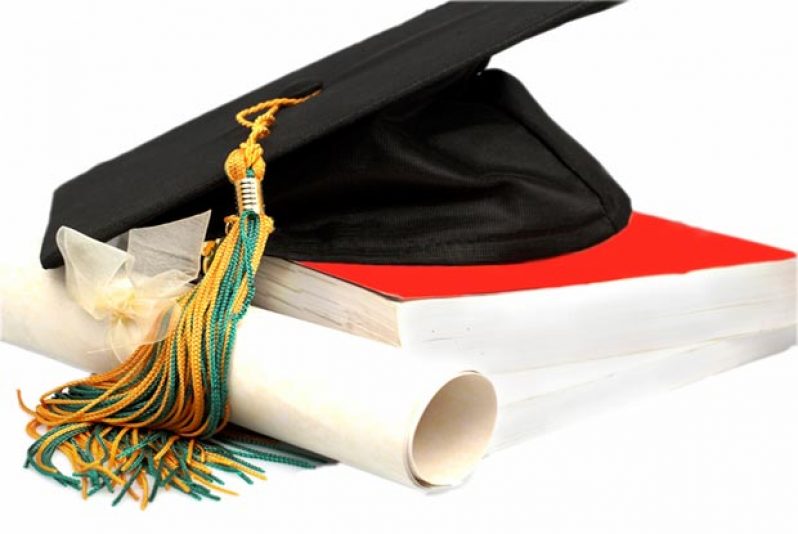THE Education Sector, with one or two exceptions, in 2013 achieved the best pass rates ever in Mathematics, English, Social Studies and other academic courses, both at the National Grade Six Assessment (NGSA) Examinations and the Caribbean Examinations Council (CXC) Caribbean Secondary Education Certificate (CSEC) and the Caribbean Advanced Proficiency Examination (CAPE).This was revealed by Minister of Education, Ms. Priya Manickchand during a performance review yesterday at Cara Lodge Suites in Georgetown, in the presence of Permanent Secretary, Ms. Delma Nedd and Chief Education Officer, Mr. Olato Sam.
The minister also announced plans by the Education Ministry to seek assistance from the World Bank, among other agencies to improve on the pass rates in Mathematics and English and better the quality of learning provided by hinterland schools in 2014.
Manickchand reported that, in 2013, Guyana had done more at every single level of the sector than it had previously as a country.
“The results were very encouraging. You might have one or two exceptions but in 2013 we are, without a doubt, at the best place we have ever been, historically, regarding pass rates,” she insisted.
She emphasised that she was totally unhappy with a 43 percent pass in Mathematics at the NGSA level in 2013 but noted that it marked a 400 percent increase on the 8.4 percent pass rate recorded in 1993 and the 53 percent higher than the 28 percent pass rate recorded in 2003.
Manickchand said that the ministry had secured the services of two specialists, one of them a special Mathematics person as a senior education officer in the secondary sector and the other a Mathematics specialist in the National Centre for Educational Resource Development (NCERD), towards improving pass rates in Mathematics.
NEW MEASURES
The ministry is also collaborating with the World Bank to introduce some new measures for making learning Mathematics accessible and interesting.
She said that, in 2014, every effort will be made to improve the pass rates in Mathematics and English so that more of school children can matriculate.
“We are in the best place we have ever been. The numbers are getting better but still too slowly for us,” Manickchand declared.
She said the Ministry of Education intends to achieve universal secondary education before the first term of President Donald Ramotar’s administration comes to an end in 2016.
The plan is that more schools will be built and extensions made with the intent that every single child of secondary age will be able to access a five-year secondary education in each region of Guyana.
This situation, she said, has been achieved in some regions but some more work has to be done in Regions 1 (Barima/Waini), 7 (Cuyuni/Mazaruni), 8 (Potaro/Siparuni), 9 (Upper Takutu/Upper Essequibo) and with a general secondary education along the coastland.
The minister said some of the regions, for example Region 1 did not need new school buildings but support in the form of transportation for the schoolchildren to and from school and the ministry was working, consciously to achieve this.
She declared that hinterland education is one of the interesting unsung stories in the education sector with more children enrolled and more trained teachers delivering education in the hinterland.
The ministry will, in 2014, take steps to improve the quality that is delivered and those will include the replenishment of the dormitories of the secondary schools in the hinterland as well as the living quarters of teachers, thereby improving the quality of life in the schools and their environs.
She said every single sheet, pillow case, pot, spoon cup, plate necessary will be in every single dorm and that ‘house parents’ will be suitably qualified and trained with the belief that improving the quality of the residences will result in an improvement in the quality of results.
She said, at the moment, all the schools in Region 9 have micro science kits so they can, by 2015, do single science subjects that they could not have done before.
She said that improving results in hinterland schools is one of the areas she is looking forward to tackling because much had been achieved in this area and what is needed there is a final push to make sure that there is true equity within the education sector.
Another big project of the ministry for 2014 will be the improvement of literacy rates among children at Grade Four primary school level.
The ministry had completed a study of the primary sector grades one to six which attempted to assess where primary schoolchildren are with respect to meeting international literacy standards.
REGARDING LITERACY
The ministry is in the process of drafting what the national plan of action will be regarding literacy, what specific actions need to be taken and costing them to ensure that more children are literate by Grade Four.
The objective is that in five years time, 80 percent of primary schoolchildren are literate by the time they exit Grade Four.
She reported, too, that the ministry had been very pleased to introduce extra-curricular activities aimed at providing a rounded education to children at all levels.
“We are incredibly pleased that, having stabilised our results we have managed to introduce extra-curricular activities which have made changes in the children exposed to them.”
The extra-curricular activities included the introduction of the steelpan into schools and opportunities for honing the debating skills of others.
The initiative had succeeded in strengthening the access of the schools to such activities that are not necessarily part of the academic programme.
The 2008-2013 five-year strategic plan of the Ministry of Education comes to an end today and the intention is to review progress from 2008 and consult with all stakeholders for publication of the new five year plan 2013-2018 by the end of January 2014.
The ministry also plans to lay a draft Education Bill before the National Assembly.
Written By Clifford Stanley



.jpg)









